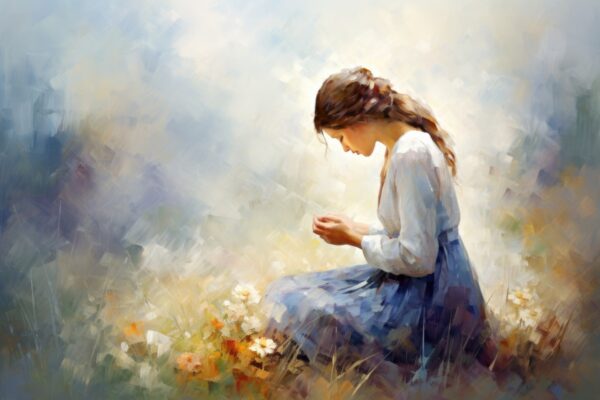If you grew up like I did with a lot of Caucasian friends, particularly Irish ones, then until recently, you, too, may have grown up with St. Patrick’s Day being a bigger deal than the feast of Our Lady of Guadalupe. No shade to St. Patrick or Irish traditions — we’ve got some “Black Irish” in the family as it is (which is what they call Mexican and Irish mixed). And the Irish and Mexicans have some great shared history, including fighting side by side, such as when the St. Patrick’s Battalion fought on the Mexican side in the battle of Monterrey in 1846. However, as a Hispanic/Latina woman growing up in the melting pot of America and living in predominantly white neighborhoods, the December feast day of Our Lady of Guadalupe was a bit eclipsed.
It wasn’t until recent years that I finally attended a traditional “Las Mañanitas” in honor of her feast day, and how beautiful it was! There was a procession outside in the early morning as the Rosary was prayed in Latin, Spanish and English. Songs to Our Lady were sung in Spanish while we walked with candles, ending in the Church as we processed the statue of Our Lady into the sanctuary. Something about that early December morning made the original morning when Our Lady appeared to St. Juan Diego seem even more real and special to me. And, like any good Mexican party, the procession was followed by a little fiesta, complete with tamales, champurrado and community in the parish hall.
Want more Radiant? Sign up for our weekly newsletter!
Although it was my first time at a real event like this, it strangely felt deeply familiar; something about it touched my soul in a way few things could. While Our Lady of Guadalupe is for all the world, she chose to appear in Mexico, giving her a special place in the heart of the Mexican people. The manner of her apparition and the details were so replete with particular and special meaning to the indigenous people of Mexico, explaining why so many converted in droves after she had appeared.
Another beautiful tradition from Spain is the “Semana Santa” (Holy Week) processions. To an outsider, the appearance of penitents wearing hoods and robes might cause them to raise an eyebrow. However, seeing the event in person, with people carrying heavy floats, the devotional and penitential meaning of the procession is innately understood. The first time I attended one of these processions, the float carried an ornate statue from Spain of Our Lady of Sorrows. The entire experience — the torches and soulful singing, the slow swaying back and forth of the float, and the crowd moving in unison — moved my soul, and there was not a dry face around, mine included.
While I’m glad to have “re-discovered” the beautiful traditions of my ancestors, I’m sorry I didn’t get to experience them until adulthood, and there are many more I have yet to experience and never knew about despite my Catholic Hispanic/Latina upbringing.
This neglect to pass down certain religious traditions stems from a growing lack of active faith in my family. Most of my Mexican family is culturally Catholic but not Catholic in practice — a problem that is getting worse and more pervasive in Hispanic households — so there was no one to teach me these traditions firsthand. Even the matriarch on my mom’s side, my abuela, is not and has not been a practicing Catholic since my mother was very little. Since the traditional Hispanic/Latina matriarch is the one to typically set the example of the Faith, and the one to pass on and instill these traditions in their children and grandchildren, two generations in my family have grown up and gone without these cultural and faith-filled experiences.
Yet, when these traditions are experienced, there is a “coming home” moment where you feel in your blood and bones that this is where you’re supposed to be. It’s as if knowing and loving these traditions is written into your DNA.
In a very diverse world, where cultures and differences are quickly blending together, I hope people of all backgrounds make the extra effort to hold on to and cherish these traditions, preparing to pass them on to the next generation at a young age rather than risking them never discovering these beautiful traditions on their own.




